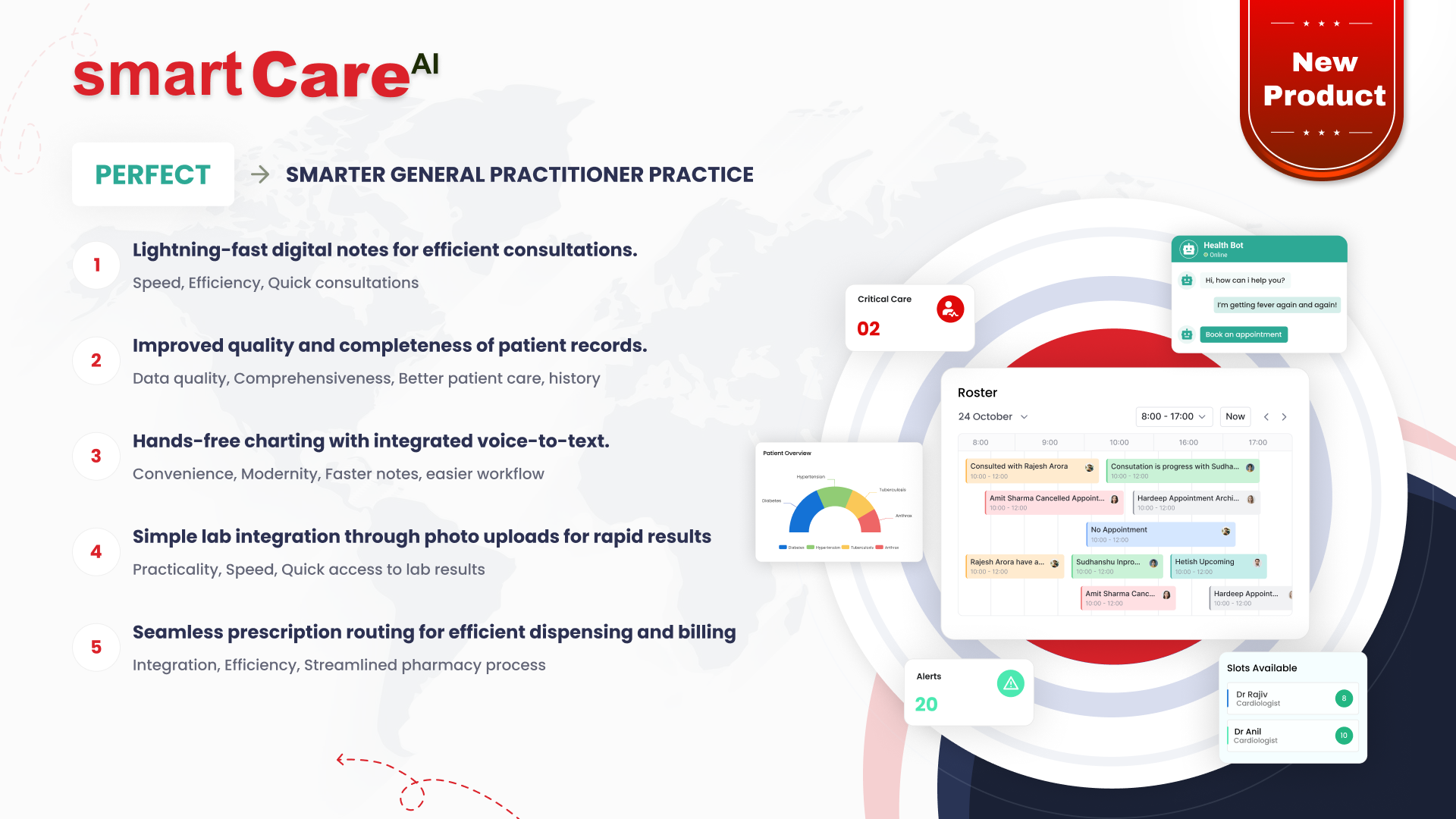Here are essential strategies for using tech to enhance client connections:
Personalize Every Interaction
Leverage customer relationship management (CRM) systems to gain deep insights into client preferences, purchase history, and behavior. This data-driven approach empowers you to deliver highly personalized experiences that resonate with each individual. From tailored product recommendations to customized communication, show your clients that you understand their unique needs.
Be There When Your Clients Need You
Real-time engagement is paramount. Implement live chat, chatbots, and instant messaging to provide immediate support and address inquiries promptly. A swift response demonstrates your commitment to exceptional customer service and builds trust.
Create Seamless Experiences Across Channels
Ensure your clients can connect with you effortlessly, regardless of their preferred device. Develop responsive websites and user-friendly mobile apps that offer seamless access to information, services, and support. By meeting your clients where they are, you create a convenient and enjoyable customer journey.
Harness the Power of Data
Utilize advanced analytics to uncover valuable insights into client behavior, preferences, and trends. This data-driven approach enables you to anticipate needs, identify opportunities, and deliver proactive solutions. By demonstrating your ability to understand your clients’ evolving expectations, you strengthen your relationship.

Foster Collaboration and Trust
Leverage video conferencing and collaboration tools to build strong partnerships. Regular virtual meetings create opportunities for open communication, problem-solving, and relationship building. Additionally, prioritize data security with robust measures like blockchain and encryption to safeguard sensitive information and instill confidence in your clients.
Streamline Operations for Better Service
Automate routine tasks like scheduling, invoicing, and reminders to free up your team to focus on building relationships. By streamlining operations, you enhance efficiency, reduce errors, and ensure timely delivery of services.
Continuously Improve Based on Feedback
Make customer feedback a cornerstone of your strategy. Implement digital tools to gather and analyze client opinions. By actively listening and responding to feedback, you demonstrate your commitment to continuous improvement and a customer-centric approach.
By effectively incorporating technology into your client relationship management strategy, you can create exceptional experiences, foster loyalty, and drive business growth.
Here are few points summarizing how to do it:-
Successfully managing a tech initiative requires careful planning, clear objectives, and meticulous execution. Whether you’re upgrading existing systems, developing a new product, or improving operational efficiency, each step in the process plays a crucial role in ensuring the project’s success. Proper financial planning, resource allocation, and risk management are essential to keep the project on track and within budget. Below, we outline the key steps to help you achieve your desired project goals.
Define Objectives and Scope
Start by clearly identifying the goals of your tech initiative. Whether it’s improving efficiency, launching a new product, or upgrading systems, knowing your objectives is crucial. Define the scope of the project early on to prevent scope creep and manage resources effectively.
Conduct a Cost-Benefit Analysis
Estimate all the costs involved, including development, hardware, software, and ongoing maintenance. Assess the benefits, such as increased revenue or cost savings, and calculate the return on investment (ROI). This analysis will help you determine if the project is financially viable.
Budget Planning
Create a detailed budget that covers all potential expenses. Break it down into categories like R&D, implementation, and marketing. Make sure to allocate a portion of the budget for contingencies to manage any unexpected risks or costs.
Funding and Financing
Decide if the project will be funded internally or if you need external funding. Prepare financial projections to forecast revenue and expenses. If external funding is necessary, consider options like loans or venture capital.
Risk Management
Identify potential risks, such as technical failures, budget overruns, or delays. Develop strategies to mitigate these risks, including contingency plans and insurance. Continuously monitor and review risks throughout the project to ensure they are managed effectively.
Resource Allocation
Align the right resources with the necessary skills and expertise. Create a timeline of deliverables to track progress and ensure the project stays on schedule.
Monitoring and Control
Establish key performance indicators (KPIs) to measure the success of the initiative. Regularly compare actual spending against the budget, and be ready to make adjustments based on performance data and any changes in scope.
Reporting and Documentation
Provide regular updates to stakeholders on the financial status, project progress, and any challenges encountered. Maintain thorough documentation of all financial plans, changes, and outcomes for future reference and review.
Post-Project Review
After the project is completed, assess whether it met its financial and strategic goals. Document lessons learned to improve future financial planning and project execution.
Conclusion
By following these steps, you can effectively manage your tech initiative, ensuring it meets its objectives, stays within budget, and delivers the desired outcomes. Careful planning, ongoing monitoring, and flexibility are key to navigating challenges and achieving success in your project development efforts.
- Cultivate a Culture of Innovation
- Encourage Experimentation:
Create an environment where employees feel safe to experiment with new ideas without fearing failure. Celebrate small wins and learn from setbacks.
- Diverse Teams:
Promote team diversity to bring together different perspectives, which can spark creative solutions and innovative ideas.
- Encourage Experimentation:
- Invest in Continuous Research and Development:
- Strategic R&D Investments:
Regularly allocate resources to R&D for exploring emerging technologies, market trends, and customer behaviour.
- Collaborations and Partnerships:
Work closely with academic institutions, research labs, and tech startups to stay on the cutting edge of technology.
- Incubators and Accelerators:
Consider setting up or participating in incubators and accelerators to nurture and tap into external innovation.
- Strategic R&D Investments:
- Adopt Agile Methodologies
- Flexibility and Speed:
Implement agile frameworks to enable quick pivots in response to market demands and technological advancements.
- Iterative Development:
Encourage rapid prototyping and iterative development cycles to test and refine innovative ideas.
- Flexibility and Speed:
- Leverage Technologies
- Stay Ahead of Trends:
Actively monitor technological trends like AI, blockchain, and quantum computing, integrating them where appropriate to drive innovation.
- Pilot Programs:
Run pilot programs to assess the potential impact of emerging technologies before full-scale adoption.
- Stay Ahead of Trends:
- Allocate Time for Innovation
- Innovation Sprints:
Schedule regular innovation sprints where employees can work on passion projects or new ideas that fall outside their usual responsibilities.
- Hackathons and Competitions:
Organize internal hackathons and innovation competitions to stimulate creative thinking and problem-solving.
- Innovation Sprints:
- Build a Community of Innovators
- Knowledge Sharing:
Create platforms for employees to share their innovations, ideas, and insights across the organization.
- Mentorship Programs:
Establish mentorship programs where seasoned innovators can guide and inspire newer team members.
- Knowledge Sharing:
- Measure and Reward Innovation
- Innovation Metrics:
Develop specific metrics to measure the impact of innovations, such as time-to-market, customer adoption rates, and revenue growth.
- Incentives and Recognition:
Implement reward systems that recognize and incentivize innovation, whether through bonuses, promotions, or public acknowledgment.
- Innovation Metrics:
- Maintain a Strong Customer Focus
- Customer Feedback Loops:
Establish continuous feedback loops with customers to gain insights into their evolving needs and challenges.
- User-Centric Design:
Use customer insights to drive user-centric design and innovation, ensuring that new products and services directly address customer pain points.
- Customer Feedback Loops:
- Embrace and Learn from Failure
- Failure as a Learning Tool:
Normalize failure as an integral part of the innovation process. Analyze failures to extract valuable lessons that can guide future efforts.
- Resilience Building:
Foster a resilient mindset within teams, encouraging them to persist and refine ideas even after setbacks.
- Failure as a Learning Tool:
- Strategic Resource Allocation
- Balance Core and Innovative Efforts:
Ensure a balance between maintaining core operations and exploring innovative initiatives. Allocate resources effectively to avoid stretching the team too thin.
- Sustainable Innovation Pipeline:
Maintain a pipeline of innovative projects at different stages of development to ensure a steady flow of new ideas reaching the market.
- Balance Core and Innovative Efforts:
- Foster a Long-Term Vision
- Innovation Roadmap:
Develop a long-term innovation roadmap that aligns with the company’s strategic goals and market opportunities.
- Future-Readiness:
Prepare the organization for future challenges by anticipating market shifts and technological advancements.
- Innovation Roadmap:

Conclusion
Sustaining innovation in an IT company requires a deliberate and multi-faceted approach. By fostering a culture of creativity, investing in continuous R&D, leveraging new technologies, and staying customer-focused, companies can not only keep pace with the rapidly changing industry but also lead it. Embracing failure and learning from it, combined with strategic resource allocation and long-term vision, will ensure that innovation is not just a buzzword but a sustainable driver of growth and success.
AI is more than just a technological advancement—it’s a beacon of hope for countless people around the world. From sophisticated diagnostic tools to predictive analytics, AI is changing the face of healthcare in profound ways. Innovations like AI-driven imaging are helping doctors detect diseases earlier and with greater accuracy. Robotic surgery is making complex procedures safer and more precise, while virtual health assistants are making healthcare more accessible and convenient for patients everywhere.
As we celebrate these remarkable achievements, it’s important to recognize that none of this progress would be possible without the hard work and dedication of brilliant minds across the IT and medical fields. The collaboration between these sectors is what drives these innovations forward, continually improving the quality of care and making a real difference in people’s lives. These successes remind us of the incredible potential that lies ahead. As we look to the future, the partnership between the IT sector and the research community will be crucial in pushing the boundaries of what’s possible and paving the way for a healthier, smarter world.
The journey of AI in healthcare is just beginning, and with ongoing commitment and collaboration, we can continue to break new ground. Together, we have the power to create a future where healthcare is not only more effective but also more accessible to all.
Here are some key points on how technology can be utilized in our businesses
- Cloud Migration:
Moving applications and data to the cloud enables better collaboration and scalability with all remote team and clientele base as well. In these times, when you have remote team, in different time zones and different locations, making things accessible through Cloud is a way to go.
- Real-Time Data Analysis:
Utilizing tools for real-time data analysis helps businesses make informed, data-driven decisions. Physical presence of team, is no more a challenge, post pandemic era. smartData have our own inhouse ERP system, via which Senior mgmt. can seamlessly take informed decisions on Engineering /HR/Sales/Admin/IS for all important functions.
- Workflow Automation:
Automating repetitive tasks can reduce human error and free up employees to focus on more strategic initiatives. We at smartData, use code components libraries so that efforts can be reduced by our team and employees can better focus on other important items.
- Cybersecurity Improvements:
Implementing robust cybersecurity measures protects critical business data and operations from cyber threats. Using Virtual Machines are efficient ways where our and client data is protected.
- Artificial Intelligence (AI) and Machine Learning (ML):
These technologies can optimize operations, predict trends, and personalize customer experiences. We can these technologies to enhance our business growth by prediction analysis methods

By strategically implementing these technologies, businesses can stay competitive and adapt to changing market demands.
AI is changing healthcare by helping doctors make quick and accurate decisions, from diagnosing illnesses to creating personalized treatment plans.
AI systems can rapidly analyze huge amounts of medical data, allowing for the early detection of diseases and predicting their outcomes. This not only improves patient care but also reduces healthcare costs by using resources more efficiently. By catching issues early, AI helps prevent complications and avoids the need for more expensive treatments.
AI-driven technologies are also transforming surgeries and patient care. Robotic surgeries, guided by AI, enhance precision, making procedures safer and recovery times faster. Remote patient monitoring systems, another AI innovation, allow doctors to keep an eye on patients’ health in real-time, even from a distance. This ensures that any problems are caught and addressed quickly, improving overall patient safety.
Beyond improving clinical practices, AI is making healthcare more affordable and accessible. By streamlining operations and allowing for more personalized care, AI is creating a healthcare system that’s both efficient and compassionate. Patients get the right care at the right time, with treatment plans tailored specifically to their needs. As AI continues to evolve, the future of healthcare looks brighter, with even more advancements that will improve the quality and accessibility of care for everyone.
Let’s face it, work can be a drag sometimes. But who says success can’t be fun? Celebrating business milestones is like hitting the jackpot without the gambling addiction. It’s a chance to pat yourself on the back, reward your team, and maybe even flex a little on social media.
So, how do you turn a boring business milestone into a reason to party like it’s 1999? Let’s break it down:
Identify Your Wins
First things first, you need to know what you’re celebrating. Is it a birthday for your company? A record-breaking sales quarter? Or maybe you just survived another Monday? All of these are worthy of a shindig.
Plan a Party That Doesn’t Suck
No one wants a lame office party. Think outside the box (or the conference room). Maybe a pizza party, a karaoke night,or even a company-wide video game tournament. If you’re feeling extra fancy, a catered lunch or a happy hour could be the way to go. Just remember, the goal is to have fun, not stress out the HR department.

Engagement
Your employees are the backbone of your business, so make them feel appreciated. Let them help plan the celebration, or at least give them a say in what kind of cake they want. And don’t forget to shower them with praise and maybe even a little extra PTO.
Social Media
Social media is like a megaphone for your business. Use it to brag about your accomplishments, share behind-the-scenes photos, and maybe even start a viral challenge. Just remember, no one wants to follow a bragging bore, so keep it fun and engaging.
New Goals
Celebrating is great, but it’s also important to keep moving forward. Take some time to reflect on your successes and set new, even more ambitious goals. After all, what’s the fun in winning if you don’t have something else to aim for?
In conclusion, celebrating business milestones is like adding sprinkles to a cupcake. It makes everything taste better and look more appealing. So, go ahead and pop that champagne (or at least a party popper) and enjoy the fruits of your labor.Your team and your customers will thank you.
Remember:
A successful business is like a well-oiled machine, but it’s the people who make it run. Celebrate them, and they’ll keep that engine roaring
Data-driven companies are much more successful—they’re 23 times more likely to gain new customers, six times more likely to keep them, and 19 times more likely to be profitable.
At smartData, we use data to create real impact for our clients. We specialize in Power BI dashboards, delivering results in cities like Los Angeles, San Francisco, and Seattle.
For community health centers in San Francisco, we built Power BI dashboards by pulling data from Azure DevOps. These dashboards, linked with Epic and eClinicalWorks EHRs, gave a clear view of health data, boosting efficiency.
In Australia, we helped a leading door manufacturer with 30+ stores and 3 warehouses. We created a real-time SCM/ERP system using Power BI. This system improved operations across the board. Real-time reports saved the company $200K annually by reducing the workload of three full-time staff.
For a Los Angeles client, we developed BI dashboards for a HEDIS pre-audit care gap workflow. These AWS-integrated dashboards provided clear visuals for population health analytics. We also managed a smooth transition from one reporting tool to another.
At smartData, we believe in the power of data. We turn data into actionable insights, helping businesses grow and succeed in a data-driven world.
In today’s digital age, cybersecurity has become a critical aspect of software development. As businesses increasingly rely on digital platforms and technologies, the need to protect sensitive data and ensure the integrity of software systems has never been greater. Cybersecurity is not just about preventing attacks; it’s about building trust, ensuring compliance, and maintaining the stability and reliability of software products. Below, we explore the key reasons why integrating robust cybersecurity measures into the software development process is essential for any organization.
Protecting Sensitive Data
Cybersecurity ensures that personal data, financial information, and intellectual property are accessible only to authorized individuals. It also prevents unauthorized users from tampering with data and keeps systems available to those who need them. Protecting sensitive data is crucial for maintaining user privacy and the integrity of business operations.
Preventing Financial Loss
Cyberattacks can lead to direct financial losses, such as stolen funds or intellectual property. Indirect costs include incident response, legal fees, regulatory fines, and damage to a company’s reputation. By implementing strong cybersecurity measures, businesses can avoid these costly disruptions and safeguard their financial stability.
Maintaining Customer Trust
A security breach can severely damage a company’s reputation, leading to lost customers and revenue. Adhering to cybersecurity standards and regulations shows a commitment to protecting customer data, which helps build trust and confidence. Customers are more likely to remain loyal to companies that demonstrate a strong focus on security.
Ensuring Compliance with Regulations
Laws like GDPR, HIPAA, and CCPA require strict cybersecurity measures to protect sensitive data. Non-compliance can result in hefty fines and legal actions, making it crucial for businesses to meet these regulatory standards. Ensuring compliance also protects the company from legal liabilities and reinforces its commitment to ethical practices.
Protecting Against Advanced Threats
Cybersecurity defends against viruses, ransomware, phishing, and other malicious attacks that could compromise systems and data. It also includes measures to prevent long-term, targeted attacks by sophisticated hackers. Staying ahead of these threats is essential for maintaining the security and functionality of software systems.
Ensuring Business Continuity
Implementing cybersecurity measures helps ensure that critical business functions can continue or quickly resume after a cyber incident. Being prepared to respond effectively minimizes downtime and operational impact. This preparedness is key to maintaining business continuity and reducing the risks associated with cyber disruptions.
Enhancing Software Quality and Reliability
Secure coding practices integrated into the software development lifecycle improve overall software quality. Regularly identifying and fixing vulnerabilities prevents them from being exploited by attackers. By focusing on security from the outset, businesses can develop more reliable and robust software products.
Safeguarding Intellectual Property
Cybersecurity also protects proprietary technologies, product designs, and other intellectual property from being stolen or compromised. This protection is vital for maintaining a competitive edge and ensuring the long-term success of the business.
Conclusion
Incorporating cybersecurity into the software development process is no longer optional—it’s a necessity. Protecting sensitive data, maintaining customer trust, ensuring compliance, preventing financial loss, and safeguarding intellectual property are all critical aspects of modern software development. By integrating strong security measures throughout the development lifecycle, organizations can build more secure, reliable, and trustworthy software products, positioning themselves for long-term success in an increasingly digital world.
With the help of wearable technology and telemedicine, healthcare is becoming more individualised and accessible, enabling people to manage their health from the comfort of their own homes.
Personalised medicine is becoming possible thanks to advances in genomics and biotechnology, which enable customised treatments based on a patient’s genetic composition. This reduces adverse effects while simultaneously increasing the efficacy of treatments. Furthermore, automation and robotics are expediting procedures, increasing accuracy, and lowering complications and recovery times.
Additionally, blockchain technology is improving healthcare interoperability and data security, guaranteeing the protection of patient data.

By providing immersive experiences for both teaching and rehabilitation, the merger of virtual reality and augmented reality is revolutionising medical education and patient care.
The healthcare industry has a promising future because of its unwavering dedication to innovation and to enhancing patient outcomes and general well-being. A world that is healthier and more connected will result from embracing these innovations.
